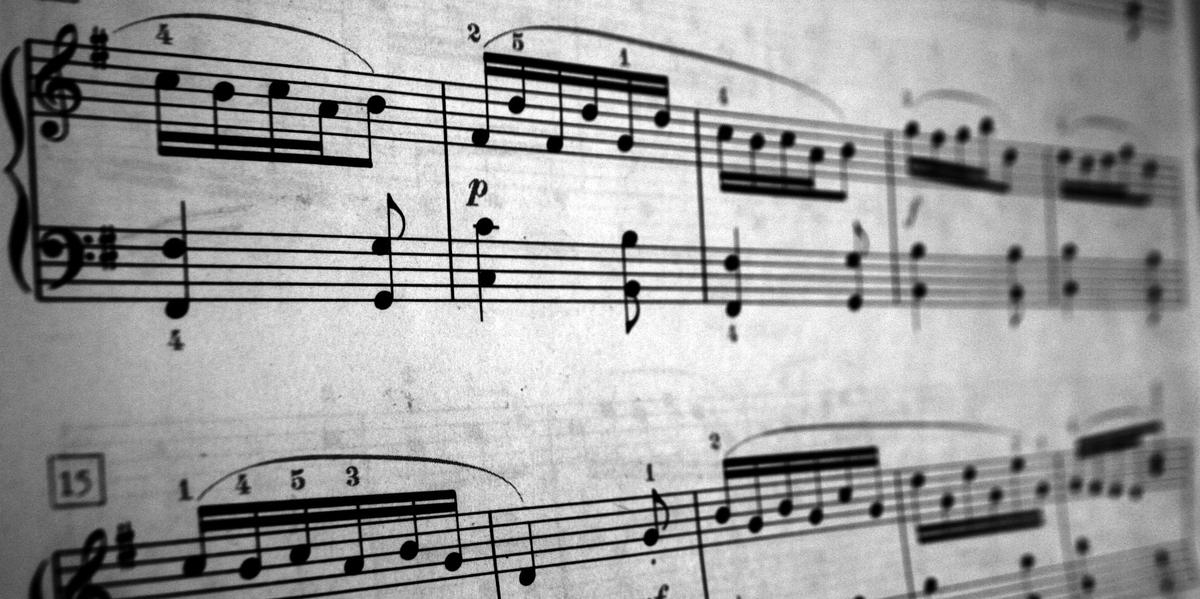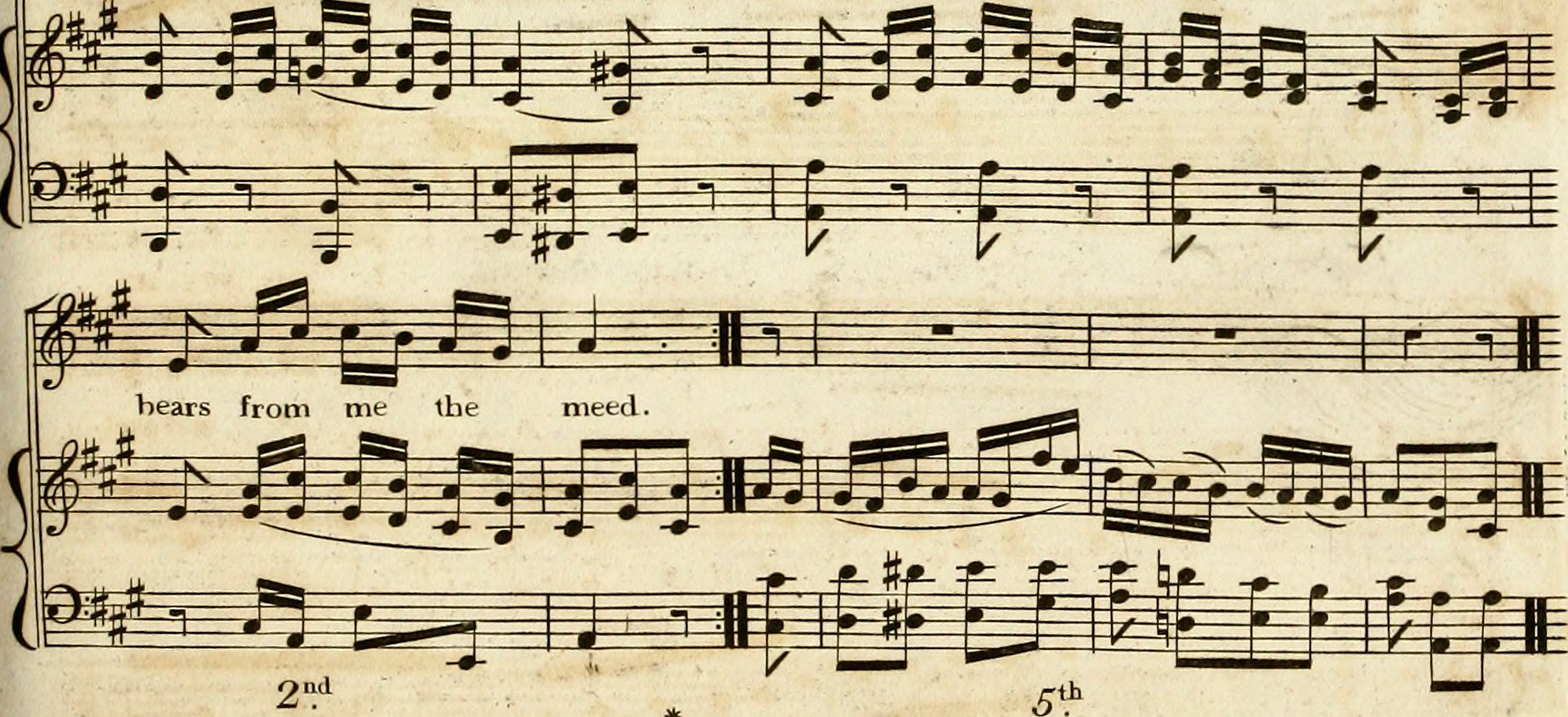What is a multiphonic? Let’s check out this hard-to-achieve special effect!
A multiphonic is an extended technique for a certain type of instrument called a multiphone. A multiphone is an instrument that usually produces one note at a time. But that doesn’t mean it can’t play more than one note at once!
Multiphonics can be two, three, or sometimes even four notes at the same time. Instruments that can make multiphonics include woodwinds, brass, and even the voice! Strings can create them too, but they are not technically multiphones.
The Science Behind Multiphonics
When we hear a multiphonic, we perceive more than one note with our ears. But if you were to look at the actual sound wave of any multiphonic being played, you would see the root note, along with stronger pieces of the harmonic series above it. So, in a sense, you are tricking your brain into hearing more than one thing.
A multiphonic with 15 partials ringing out might sound like two simultaneous notes to your brain. And, to confuse you even more, even when you only play one note, no multiphonics intended, the many notes of the harmonic series above and below are always ringing out to some extent! It can kind of be compared to how, if you want to play higher on a brass instrument, you just have to blow with more air pressure (and adjust your embouchure) to get to the next partial. But these higher notes are always present, in a small capacity, inside the lower sounds that you play.
Categories
According to flutist Robert Dick, there are actually three different kinds of multiphonics: small interval, medium interval, and large interval. The way you approach playing them depends on which interval the multiphonics are. Small interval multiphonics being the easiest, because the notes are only about a third or so away. Here Robert Dick talks about how to play all three kinds of intervals and provides more information on the different types of them here.
Playing multiphonics is essentially ‘confusing your instrument into playing more than one note at a time’. Take a look at our article, oboe multiphonics! And, on top of all these, there are three more categories we can put multiphonics into: dissonant, consonant, and beating:
In dissonant multiphonics (probably the most infrequently used type), a spectral analysis would show that the sound does not follow regular intervals. Essentially, it sounds like a multi-note, dissonant chord to our ears.
In consonant multiphonics, spectral analyses show partials that follow the harmonic series. In this scenario, the reason why we hear more than one note is because the amplitudes of the partials in the note vary.
When we have beating multiphonics, the reason why we hear more than one note is that we majorly confuse our ears. We can’t pick out the partials because they’re so close together. This makes us hear beats, which aren’t even there! So, not only are we confusing our instruments when we play multiphonics. We’re confusing ourselves, too!
And if you were to ask me, I’d say there’s a fourth kind too! This is the only brass player use primarily, but any instrument can do it. Use your voice to sing a note, while you play. Now, onto what multiphonics look like.
Notation
Modern music requires modern notation. So what in the world do multiphonics look like on the page?
When you see a multiphonic written for a wind instrument, it will most likely be a one-bar held note, with the special fingering for the note, placed above. Below y ou will see the dynamic for the multiphonic. If you’re playing multiphonics, you’ll probably see a dynamic marking under every single one. But why?
Fingerings for multiphonics don’t just work in any register. One fingering that might work for pianissimo, most likely won’t sound at all if you try and play it at a forte.
When notated, you can see that the root on the multiphonic is the lowest note on the page. At first glance, they look like a notated chord (which, in a sense, it is a chord). However, the font on the notes above the tonic (that is, the possible notes that could come out with the tonic) are often in a slanted font.
Timeline
While brass composers have been writing multiphonics for quite some time, woodwind composers have not. Multiphonics for woodwinds didn’t come around until about the 20th century. The flute pieces Sequenza 1 and Porporzioni were written for the flute in 1958. Before these two pieces, there wasn’t really any woodwind multiphonic rep out there. And, if you think about, that’s pretty new, in musical terms!
Instrumental Magic
We discussed in the introduction how brass, reeds, and even the voice can produce the mysterious multiphonic. But the resulting sound and production methods can vary widely between instruments. So let’s dive in!
Clarinet
It’s quite common to find clarinet multiphonics in modern pieces, and even in etudes. Multiphonics on the clarinet sound reedy and mysterious. The 11th study from the etude book Petite Methode Contemporaine, uses multiphonics beautifully.
Flute
Multiphonics are widely used in modern flute repertoire as well. From Ian Clarke to Robert Dick to Klaus Stahmer, it’s clear that composers love to use this technique on the flute. Multiphonics are easier to produce on the flute than other woodwind instruments because there isn’t the resistance of having a reed in the way.
Multiphonics on the flute can sound ethereal or haunting, like bamboo reeds, or a children's choir. These techniques fall within the flute extended techniques!
Saxophone
Producing multiphonics on the saxophone is similar to the clarinet. But did you know that some saxophone pedagogies suggest using multiphonics to make your tone better?
If you’re a saxophonist, check out Sirvalorsax. He has some great tips on how to perfect your altissimo register, by using multiphonics. In this video, he shows basic multiphonic fingerings for the saxophone, and displays how multiphonics improve your altissimo tone!
Trombone Multiphonics
Check out this video from Kevin Jackson. Here he is using the method of singing and playing to create a multiphonic. Can you hear the overtone (third note) also popping out?
In order to get the ideal buzzy sound, you’ll have to sing higher than you play (this is more-so true for brass, and not as relevant to instruments such as the flute). Trombone multiphonics are possible, but what about other members of the brass family? Unless you’re a soprano, doing this sing-and-play multiphonic method with the trumpet will prove pretty difficult. But vocalists will find that they can use this method on instruments such as the tuba, french horn, and euphonium as well.
Brass players have been using multiphonics in classical music since around the 18th century. Carl von Weber was one of the first to write for brass in this way!
But there is also another type of multiphonic for brass; the lip multiphonic. In lip multiphonics, the player adjusts their embouchure so that they are in-between two partials, thus getting two notes.
Strings
Multiphonics happen in string instruments when two or more harmonics are sounding individually on a single string. While this extended technique is usually reserved for winds, cellos, violins, guitars, and other strings can achieve them as well. There are roughly 8 pure harmonics on each cello string, and 18 multiphonics on the last three guitar strings- So yes, strings can too!
Throat Singing
Tuvan throat singing, also known as Tibetan throat singing, is actually an example of a multiphonic technique being used in the voice. Before we discuss how it works, let’s take a listen to a sample of it:
In the beginning, it sounds whistley and ethereal, and later transitions to a lower, growly multiphonic sound.
While throat singing is often something associated with Mongolia, it is actually something that can be found in other parts of Asia, South Africa, and Inuit cultures as well. There are even records of Vikings using this technique! So, if you think about it, the concept of multiphonics in music might actually be a much older concept than the ‘modern’ idea we peg it as.
If you can do that party-trick where you hum in the back of your throat and sing, congratulations! You can do the third type of multiphonic with the voice.
If you’re interested in learning how to sing overtone multiphonics, Anna-Maria Hefele has a great video, which is coming from more of a classical direction.
Closing
From Tuvan throat singing to modern brass pieces, it's clear that multiphonics can be found in many genres and instruments from around the world.





